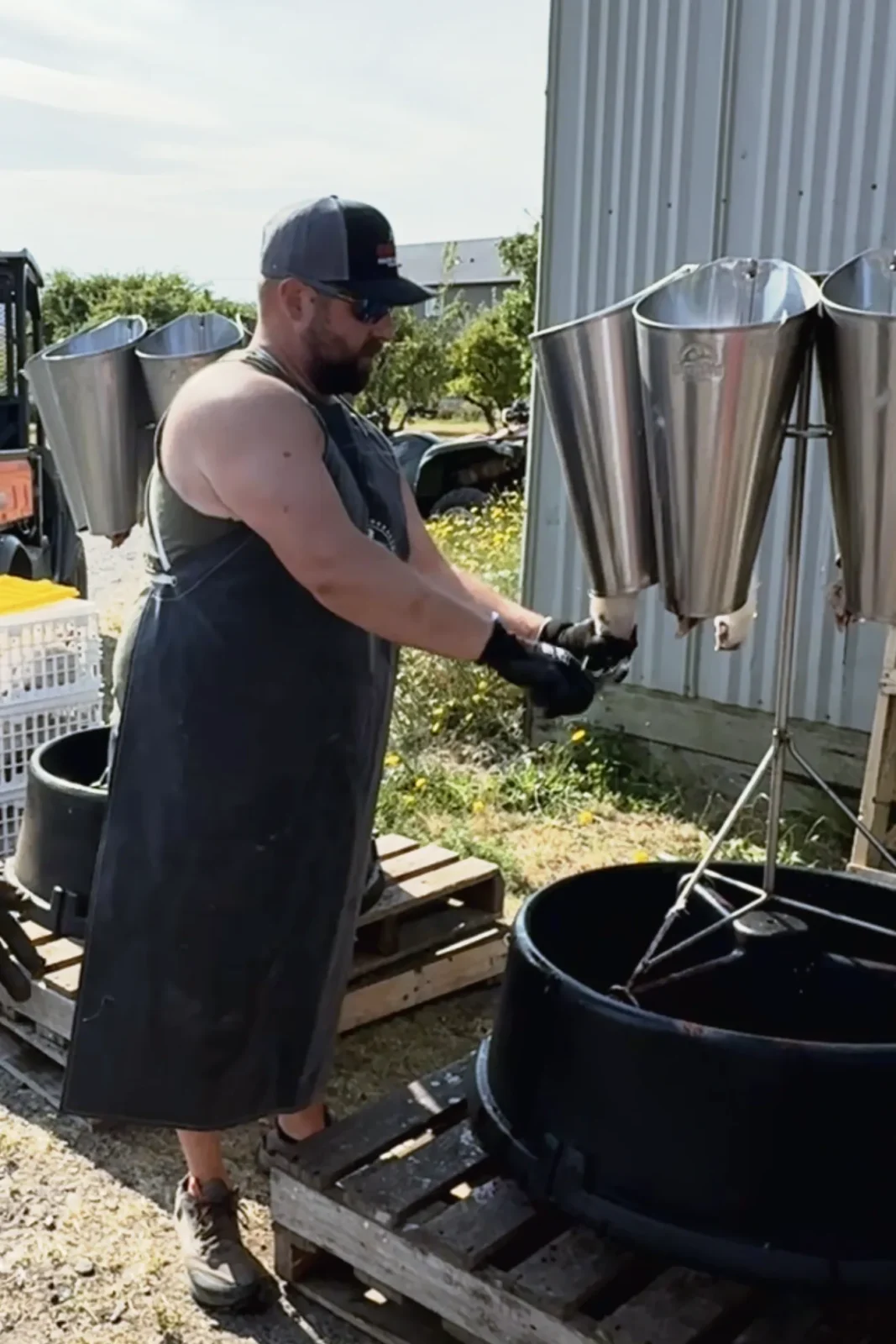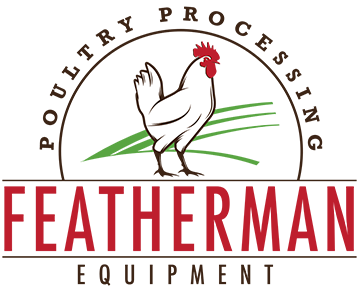Insights & Education
Myth Busting Poultry Processing: Part 2
As promised, we’re back with more myths to bust. In Part 1, we tackled three common beliefs: Poultry Processing is Difficult, It’s Easier to Skin a Chicken, and I Can’t Afford Processing Equipment. Now, we’ll dive into some finer-point myths that matter just as much when it comes to processing.
Myth #4.1: The Chopping Block is Best Poultry Processing Method
How many children have been traumatized by a headless chicken running around? Who needs that memory? My 91-year-old mom still has a phobia of birds because of this.
Don’t do it! Don’t chop, wring, shoot, pith, or electric shock a chicken—and I’m pretty sure you’re not going to gas.

The kill method you employ may be your single biggest distinction from CAFO chickens, and it’s important to understand it well. There are two powerful differences between factory kill methods and your sacrifice.
First, most of our world is well beyond the barbarism of “punishment-style” human executions. Let’s elevate consciousness by example and honor the chickens with a ritual sacrificial technique rather than one that resembles human execution.
Most religions prescribe a knife cut to the throat and train the holy man exactly how to do it. Within this context, we are the holy ones. We release the spirit in order to harvest the flesh. That is part of the silent, sacred contract made the moment we buy our birds: we give you the best life, you give us the best nutrition. That contract doesn’t end the day before harvest.Kill technique also impacts flavor and sanitation. To bust this myth, we need to take a shallow dive into anatomy and physiology—as well as redefine the word gamey. Humane kill setups like kill stands and cones are designed to make this process efficient, respectful, and clean.
Myth #4.2: Bleed Out Is All or None
We don’t think much about bleed out. It happens with every technique (except one I’ll discuss later), and it might seem like an all-or-none deal. Either it happens or it doesn’t, right? Wrong.
There are wide variations—up to 50%—in the amount of blood released depending on the kill method. Why? Because most techniques cut off communication via the nervous system between the brain, heart, and lungs.
All kill methods involving neck and brain trauma destroy the electrical system between the heart and lungs. After that, things are far from normal. The heart defaults to a very rapid, shallow beat, not sufficient to push blood out. Gravity does most of the work, taking twice as long and still not nearly as effective.A proper incision to the carotid artery is unfelt—like a paper cut—and causes blackout in less than two seconds. Using the right scalder after a proper bleed out ensures feathers release easily and the process stays efficient.
Myth #4.3: The Jugular Vein Is the Carotid Artery
Know your anatomy here. The carotid artery is deeper in the neck than the jugular vein. Arteries supply muscles and organs with oxygen and operate under more pressure. Veins return blood just under the skin, expelling carbon dioxide, and require less pressure.
Think of a blood pressure cuff. That first number, the higher one, is arterial pressure—ideally around 120. The second is venous pressure, about a third lower at 80. The sacrificial cut must sever both the vein and the artery—not just the vein—to ensure quick loss of consciousness and an effective, timely bleed out.
Myth #4.4: Wild Meat Is Gamey
Catch where we’re headed? Gaminess is all about the blood in the meat. One hundred percent! No other factors involved. If a hunter makes a disabling shot and quickly bleeds out his prey, he minimizes the tainted flavor.
Our taste buds are trained to dislike what we call “gaminess”—and for good reason. Blood is the perfect medium for bacterial growth. Research shows a significant decrease in bacterial growth on poultry carcasses given a carotid cut compared to those shocked and bled.
This is about health, safety, and shelf life. And it’s huge.
I witnessed one exception to bleed out in the Kalahari Desert in Botswana, where Bushmen harvested two successful hare traps. One was snared around the neck and suffocated; the other was still alive. The Bushmen carefully held the live hare and solidly bonked him on the head, rendering him unconscious. Then they held the hare by his feet and repeatedly struck the upper legs.
By splintering the femurs, they punctured the large femoral arteries and the hare bled out internally. Conservation of energy is the law of the wild, and its corollary is waste not. The majority of the hare’s blood stayed in the legs, and we cooked and ate it on the spot.
And when it comes to poultry, using dependable pluckers ensures the final product is clean, consistent, and ready for the table.
Poultry processing doesn’t have to be difficult, stressful, or wasteful. With the right approach—and the right tools—you can save time, honor your birds, and bring better food to your table.
– David Schafer, Founder & Owner of Featherman Equipment
Process Smarter. Process Better.
Humane, efficient processing starts with the right tools—and we’ve got you covered. Whether you need a kill stand and cones for a clean, calm dispatch, a scalder for perfect feather release, or a plucker that saves hours, Featherman Equipment delivers quality you can trust for years to come.
Don’t miss our best tips, seasonal how-to’s, and exclusive offers—sign up for our newsletter today.

